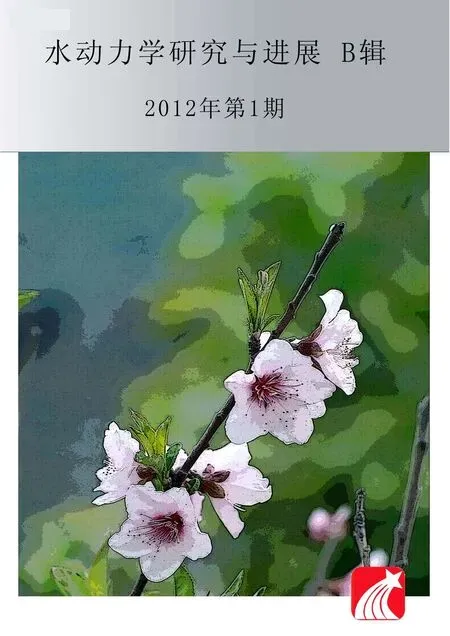HIGH-SPEED FLOW EROSION ON A NEW ROLLER COMPACTED CONCRETE DAM DURING CONSTRUCTION*
WANG Xin, LUO Shao-ze, HU Ya-an, YUAN Qiang, WANG He-sheng
Hydraulic Engineering Department, Nanjing Hydraulic Research ?nstitute, Nanjing 210029, China
State Key Laboratory of Hydrology-Water Resources and Hydraulic Engineering, Nanjing 210098, China, E-mail: xwang@nhri.cn
ZHAO Lan-hao
College of Water Conservancy and Hydropower Engineering, Hohai University, Nanjing 210098, China
HIGH-SPEED FLOW EROSION ON A NEW ROLLER COMPACTED CONCRETE DAM DURING CONSTRUCTION*
WANG Xin, LUO Shao-ze, HU Ya-an, YUAN Qiang, WANG He-sheng
Hydraulic Engineering Department, Nanjing Hydraulic Research ?nstitute, Nanjing 210029, China
State Key Laboratory of Hydrology-Water Resources and Hydraulic Engineering, Nanjing 210098, China, E-mail: xwang@nhri.cn
ZHAO Lan-hao
College of Water Conservancy and Hydropower Engineering, Hohai University, Nanjing 210098, China
(Received May 20, 2011, Revised September 6, 2011)
A new roller compacted concrete dam of Fengman Hydropower Station is to be built in the toe of the old dam, which was identified as a dangerous dam. The new dam during construction would be influenced by the high-speed flow discharged from the old dam, which is an important problem to be considered for the first time in China, and which would affect the construction of the whole project. Therefore, a series of erosion experiments were conducted in this article. A high-speed flow erosion test apparatus was developed for the erosion experiments of the new dam materials. The maximum jet velocity goes up to 40 m/s and the section area of the nozzle is 0.0025 m2. ?n the process of experiments, the equipment shows a good performance. Erosive wear tests for two types of materials used in the new dam, a roller compacted concrete and a distorted concrete with four kinds of ages were carried out with the flow velocity in the range of 30 m/s-35 m/s. Erosion parameters and erosion laws for the two types of concretes with different ages were determined, and a general relationship between the erosion rate and the flow velocity is obtained as: =PNcv, with the velocity exponent P between 3.33 and 3.93. ?t is concluded that the erosion resistance of the distorted concrete is better than that of the roller compacted concrete and the mechanical properties of the concretes of over 14 d age are influenced slightly by the water impact. The test results might serve as a practical technique guide for the safety of this project during its construction in the flood season.
high-speed flow, impact apparatus, erosion test, roller compacted concrete, hydraulic structures
2012,24(1):32-38
DO?: 10.1016/S1001-6058(11)60216-3
Introduction
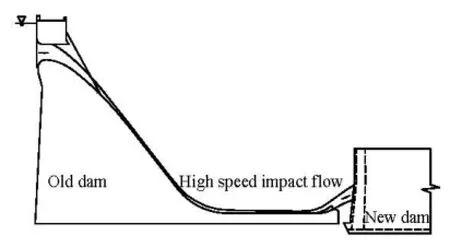
Fig.1 Schematic diagram of the new dam impacted by discharged flow from the old dam
Fengman Hydropower Station, located in the second Songhua River northeast of China, was identified as a dangerous dam. After a large number of studies, it was decided that a new roller compacted concrete dam would be built behind the old dam. The distance between the axis of the two dams is 120 m and the distance from the upstream face of the new dam to the flip bucket terminal of the old dam is 6 m-7 m. As a result, during the construction of the new dam, the
discharged flow through the old dam in the flood period would directly impact the new dam, just as shown in Fig.1. According to hydraulic model tests and numerical analyses, the speed of the impact flow exceeds 30 m/s and the maximum value is close to 35 m/s. Therefore, it is very possible that the erosivedamage would occur for the concrete of different ages during construction while being impacted by the high speed flow. This is a technical problem to be faced for the first time in the repair project for an old dam at home and abroad, and it is also a key factor to determine whether the construction could be carried out smoothly.
The erosive wear of hydraulic discharge structures has always been a well concerned problem[1]. From the first research article on erosion published by Wahl and Hartstein in 1940s, the erosion resistant performance of materials and the relationship with its inner factors have been much studied worldwide[2], including the definition of the brittle and ductile materials and the influence of the hardness, the flow velocity, the flow angle, and the sediment concentration on the erosive wear. For example, the relationship between the erosion rate and the flow velocity of the metal material under a flow angle of 45owas determined in many experiments[3], accelerated erosive wear experiments using the particle-water mixture flow generated by high pressure water jet equipment were carried out to study the effect of the flow velocity and angle[4], the erosive resistant performance of several metal materials used in turbine and the erosive mechanism were investigated based on wear morphology[5,6], the erosion resistance of two types of hydraulic concrete, a plain concrete and a concrete reinforced with a low volume of steel fibers, was studied with flow velocity up to 230 m/s and with flow angles of 15oand 90o[7,8], the erosion tests of nine types of high strength concrete with compressive strength of
75 MPa-120MPa were conducted and the erosion resistance of these materials was determined against the compression strength, the modulus of elasticity, the fiber material and the dimensions[9], a mathematical model of erosion wear of high performance concrete was proposed based on erosion experiments[10].
Although many kinds of apparatus were developed for materials erosion tests[11], none of them was suitable for this water impact test. Thus, based on previous studies, according to the features and requirements of the test, a new kind of high-speed impact test equipment is developed in this article, and some important conclusions are obtained from a series of flow impact tests under different conditions. The test results might serve as a practical technique guide for the safety of this project during construction in the flood season.
1. Test apparatus development
At present, the devices used for erosion tests are mainly of particle-water type, with small nozzle, for ultrahigh velocity (over 200 m/s), to accelerate the erosive wear of materials. A comparison among different materials was the main method to determine the erosion resistance. However, the discharged flow from Fengman old dam is clean water without particles and the velocity of the attack water on the new dam is in the range of 30 m/s-35 m/s. The problem that we are facing is the erosion wear of the new dam under the real impact velocity with clean water and is not the accelerated erosive parameters. Therefore, the new erosion test and the test apparatus have to be specially designed.
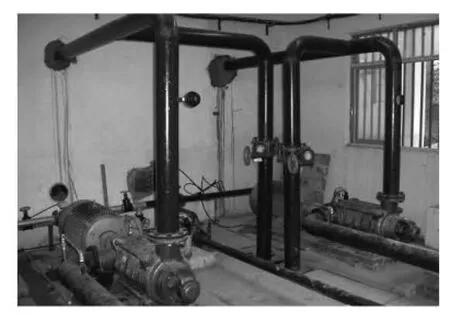
Fig.2 Power apparatus
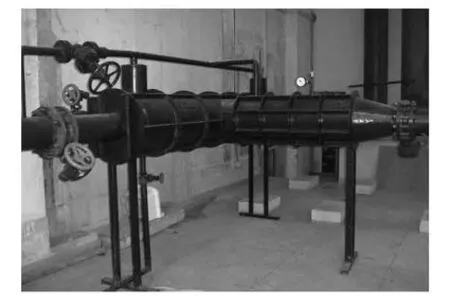
Fig.3 Pressure regulation, exhaust and water control piping
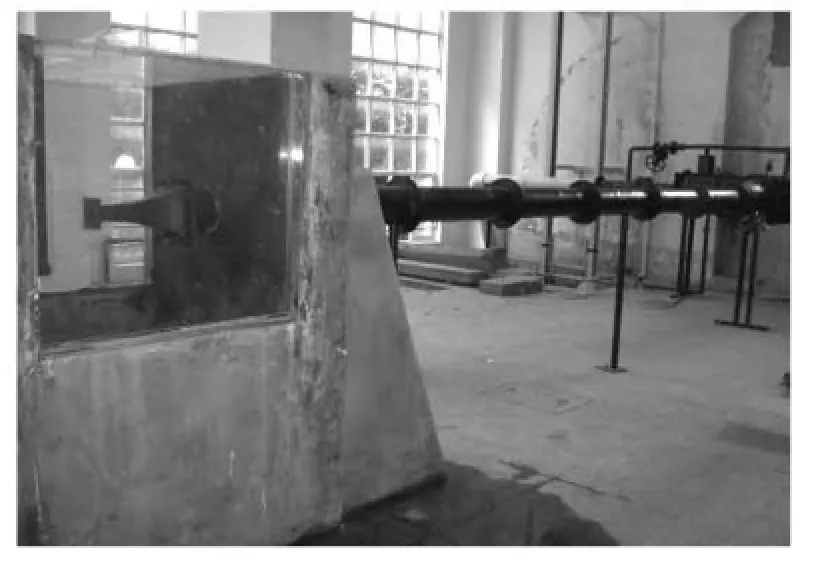
Fig.4 Delivery pipes and test section
The laboratory conditions, such as the power, the reservoir, and the site, are to be considered for the design of the whole impact test model. The test equipment includes the power machine, the water conveyance piping, the pressure stabilized apparatus, the exhaust piping, the by-pass piping (for flow control),the test section and the backwater system. The power machine contains two three-phase motors with 100 kw rated power to drive a high pressure multistage centrifugal with 200 m water head and 50 L/s rated flow individually, and they supply water for the system as shown in Fig.2. Due to the high pressure of the whole equipment system, the high pressure seamless steel tubes with reinforced welding are used for all pipes and the high pressure valves are used for valves in the pipes, which could bear a pressure of 25 kg per square centimeter. The pressure gauges are placed in the pipes to monitor the flow pressure. Figure 3 illustrates the pressure regulation, the exhaust, and the flow control apparatus. The numerical calculations and the model tests for the deflecting flow of the old dam show that the velocity of the deflecting flow of the old dam attacking the new dam is in the range of
30 m/s-34 m/s. So in the test section, the nozzle is made in the solid curve constriction with the outlet section dimension of 0.05 m×0.05 m. The maximum jet velocity could be up to 40 m/s, which would completely meet the requirement of the test. The concrete specimen is fixed in the impacted location with a distance of 0.3 m to the nozzle. According to previous research results, the erosion rate increases with the increase of the flow angle for brittle materials[12,13]. As a result, the flow angle of 90ois selected in the test for safety consideration, that is, the high speed flow would vertically impact the right side of the test specimen. The delivery pipes and the test section are shown in Fig.4. The high velocity flow would fall into the backwater system after impacting the specimen. A sharp edged rectangular weir is installed in the outlet of the return flume to measure the flow, and then the jet velocity of the equipment could be computed. The advantages of this equipment include: the increased jet area under the real velocity, the easy control of the test jet velocity by using the by-pass piping, and without the need to stop the pumps in the process of replacing specimens.

Table 1 Mixing proportions of roller compacted concrete used for the new dam
2. Experimental approach
The Roller Compacted Concrete (RCC) and the Distorted Concrete (DC) specimens are made according to the concrete mix proportion used for the new dam as listed in Table 1. The distorted concrete is obtained through mixing the cement paste and the roller compacted concrete, and the paste accounts for 6% of the RCC volume. Because of the two aggregate gradation of the concrete, the dimension of the test specimen is determined as 0.15 m×0.15 m×0.3 m. All these steps to make concrete specimens, such as mixing, forming, maintenance and so on, follow the standard. These specimens are put in water to soak for 48 h to full saturation before experiments, and then, wiping the specimen surface with rags, the surface dried saturated specimens are weighted by the TG320 balance of 10 mg in graduation. The rectangle side of the specimen(0.15 m×0.3 m) is chosen as the impacted surface and the specimen is to be taken out to observe and take a photo for comparison at the end of every hour. The specimen’s surface is also wiped, before being weighted after experiments. The parameters, such as mass loss, erosion rate, erosion resistant strength, could be calculated, and the erosion rate of the concrete is estimated as follows

where N is the erosion rate, that is the mass loss after impact in unit area and unit time,0M is the specimen mass before the erosion,tM is the specimen mass after being impacted for t hours, t is the experimental time, S is the impacted area of the specimen, The elasticity modulus and the axial compressive strength of the concrete specimens after impact are determined by related tests.
Taking advantage of the fact that the erosion test equipment is developed by ourselves, a series of preparation tests for different jet velocities and impacting times are conducted at first, and it is shown that the morphology of the concrete specimen surface is almost not changed under a low jet velocity while the erosion wear can be observed to some extent but without severe damage even under a high velocity. ?t is also shown that the main erosion wear occurs in the first hour of the initial impacting stage and becomes stable in the second hour. Therefore, the real flow velocities 30 m/s-35 m/s that the new dam may be im-pacted are selected for the erosion test and the impacting time is determined to be 2 h for every specimen. The water jet impact with different speeds is shown in Fig.5.
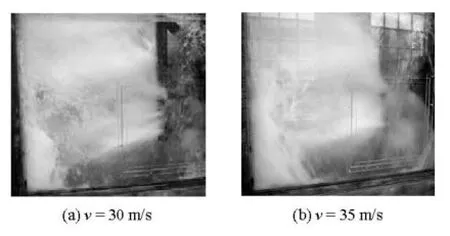
Fig.5 Water jet impact with different speeds

Table 2 Experimental conditions
Experimental conditions are listed in Table 2. They cover two types of concrete, with four different concrete ages and five water flow velocities, that is, 14 d, 28 d, 60 d and 90 d, 0 m/s, 30 m/s, 31.5 m/s, 33 m/s and 35 m/s. So 25 cases of conditions are considered all together and 5 group experiments are carried out to obtain an average for every condition. Therefore, the group number of erosion tests is 4× 5× 5=100 and the number of tests for materials properties is 5× 5× 5=125.
3. Experimental results
3.1 Erosion modes
According to the above experimental conditions, a series of water jet impact tests for roller compacted concretes with different ages and different flow velocities were carried out. ?n the process, the developed equipment displays its good performance during long time continuous running. The jet is stable and the maximum velocity can reach up to 40 m/s, which could satisfy the experiment requirements very well. The erosion damages are determined through a comparison of the photos taken before and after the experiment. Figure 6 illustrates the morphology changes of a group specimens with different ages and with flow velocity of 35 m/s for an hour’s impact. The following conclusions could be drawn from these photos:
The impact action of the high speed flow to the roller compacted concrete can be described by the jet abrasion and the erosion wear of the refracted flow.
After a continuous impact of the water flow of 35 m/s for 2 h, these different age specimens were not severely damaged and only the cementing material on the surface was denudated to some extent.
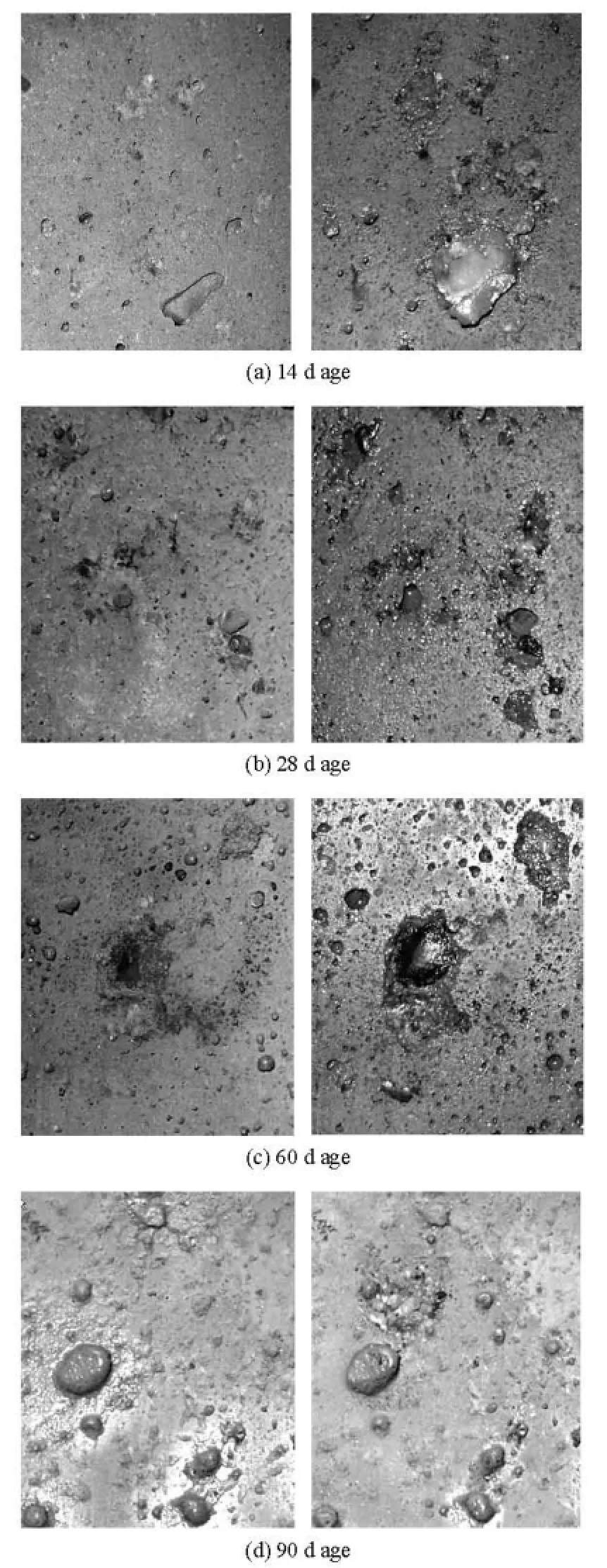
Fig.6 Surface feature comparison of different age specimens impacted by a flow of 35 m/s for 1 h (image width of about 0.03 m)

Table 3 The average erosion parameters
Among those locations of the surface defects, large aggregates or concentrated aggregates in the surface layer were more easily denudated.

Fig.7 The relationship between erosion rate and flow velocity
With the increase of the concrete age, the erosion degree is gradually reduced.
3.2 Relationship between flow velocity and erosion
rate
Table 3 shows the average concrete erosion parameters under different conditions obtained from a series of experiments. The following conclusions could be drawn from the data in the table:
For a given flow velocity, with the increase of the concrete age, the average mass loss and the erosion rate are basically decreased and become stable after the age of 60 d.
For the concrete of same age, the average mass loss and the erosion rate increase as the water flow velocity increases. Figure 7 shows the relationship between them. The influence of the flow velocity on the erosion rate is nonlinear

where c is a constant, v is the flow velocity, P is a power exponent. The constant c and the power exponent P, estimated by a regression analysis, take values of 4×10-5-2×10-3and 3.33-3.93, respectively.

Table 4 Velocity exponent of different materials
The relationship between the erosion rate and the flow velocity was much studied, with the velocity power exponents for different materials being estimated through regressions of the experimental results. As shown in Table 4, the power exponents are between 2.25 and 2.55 for metals[14], about 3 for ceramics[2], more than 5 for polymers[15]and between 2.75 and 3.07 for concretes[16]. ?t could be concluded from the experimental results of this paper that the velocity exponent of the erosion rate for the roller compacted concrete used for the new dam is between 3.33 and 3.93 under the clean water impact without particles with the flow angle of 90o.
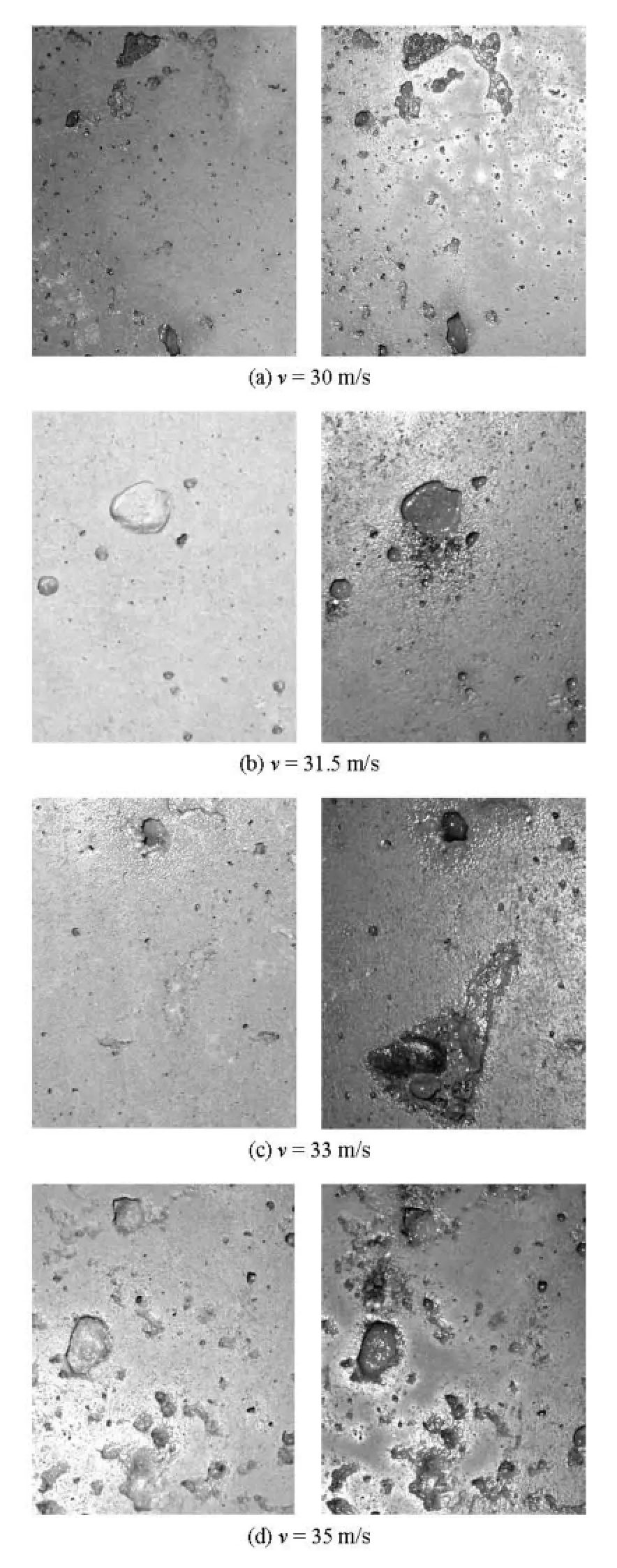
Fig.8 Erosive wear of distorted concrete (image width of about 0.03 m)
3.3 Comparison between RCC and DC
The paste content of the distorted concrete is higher than that of the roller compacted concrete by about 6%. The erosion wear of the distorted concrete under four different flow velocities are shown in Fig.8, from which it can be seen that the distorted concrete surface is smoother and denser due to the higher paste content. The erosion wear of the specimen surface is obviously decreased as compared with the roller compacted concrete and their average erosion parameters are listed in Table 5. The relationship between the erosion rate and the flow velocity is obtained by a power exponent fitting as shown in Fig.9. The velocity power exponent is 3.613, well in the range of 3.33-3.93.

Table 5 Erosion wear comparison between RCC and DC of the same age of 14 d
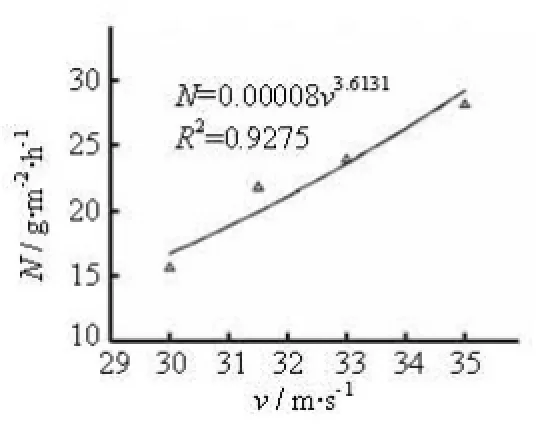
Fig.9 The relationship between erosion rate and jet speed
3.4 The influence of the flow impact on the mechanical properties of the material
Table 6 lists the mechanical parameters obtained from experiments of the concrete specimens impacted and not impacted. ?t could be seen that the difference of the axial compressive strength and the elasticity modulus between the specimens impacted and not impacted is slight. For a given concrete age, there is no pronounced relationship between the material mechanical parameters and the flow velocity. Therefore, the mechanical properties of concretes are nearly not influenced by the flow impact.
4. Conclusions
The following conclusions can be drawn from this investigation:
(1) The high-speed flow erosion test apparatus is developed for erosion experiments for the new dam materials. The maximum jet velocity can reach up to 40 m/s and the section area of the nozzle is 0.0025 m2. ?n the process of experiments, the equipment shows a good performance.
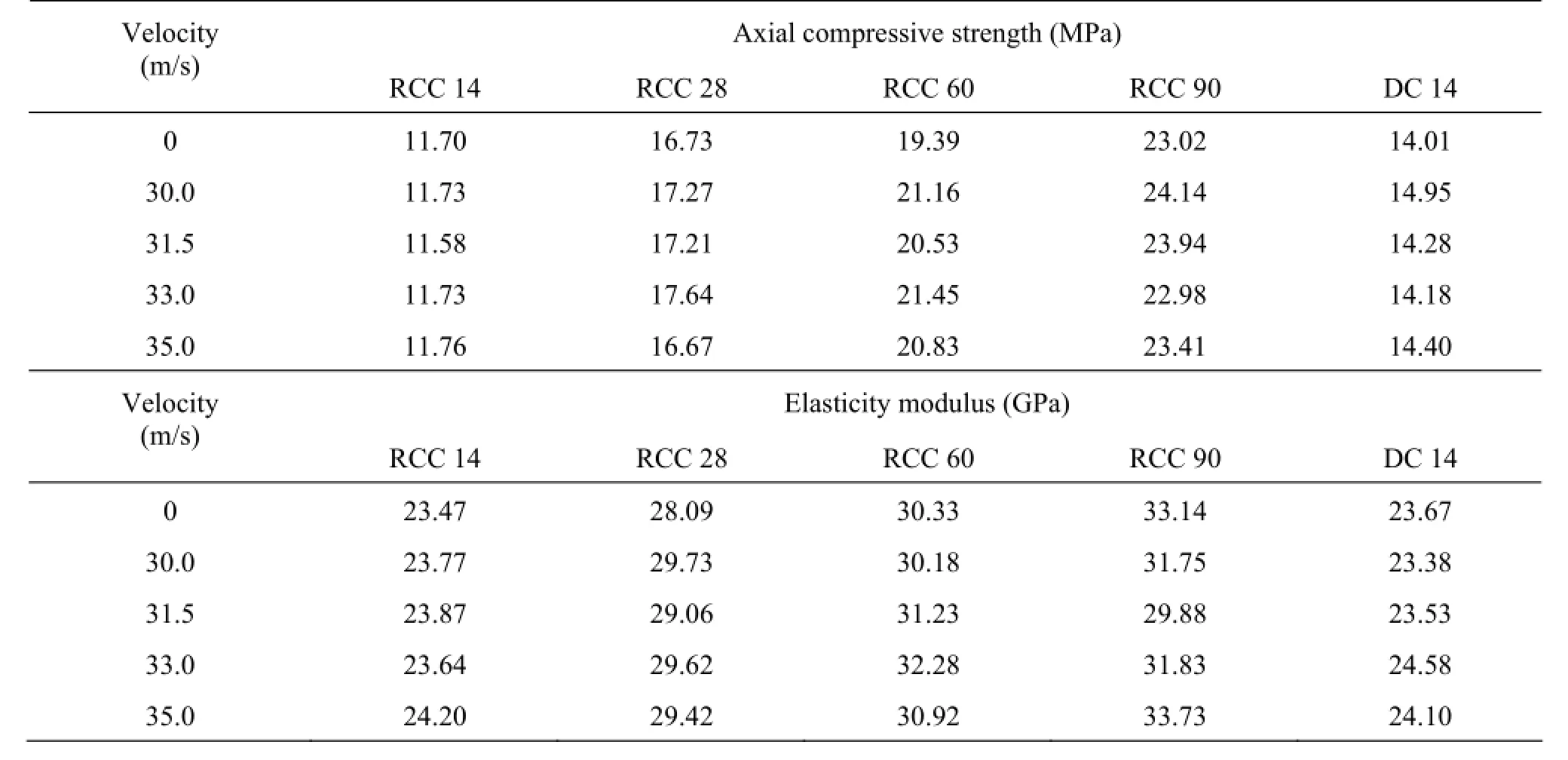
Table 6 Materials mechanical parameters
(2) Continuously impacted by the water flow of 35m/s for 2 h, these different age specimens are not severely damaged and only the cementing material of the surface is denudated to some extent. Among the locations of the surface defects, large aggregates or concentrated aggregates in the surface layer are more easily denudated.
(3) An empirical relationship is found between the erosion rate and the flow velocity: =PNcv. The velocity exponent P takes values between 3.33 and 3.93 for the water flow without particles.
(4) The erosion resistance of the distorted concrete is better than that of the roller compacted concrete. The mechanical properties of the concretes of age over 14 d is influenced slightly by the water impact.
[1] WU Jian-hua, LUO Chao. Effects of entrained air manner on cavitation damage[J]. Journal of Hydrodynamics, 2011, 23(3): 333-338.
[2] STACHOW?AK G. W., BATCHELOR A. W. Engineering Tribology[M]. 3th Ed., London, UK: Elsevier, 2006, 501- 551.
[3] GE Yi-xiong, YANG Jing-jie and SUN Zhao-xiong. Preparation of abrasion resistance concrete with silica fume slag powder[J]. Journal of Wuhan University of Technology, 2009, 31(7): 68-71(in Chinese).
[4] Y?N Yan-guo, HU Xian-guo and CU? De-mi. Wear behaviors and mechanism of hydraulic concrete impacted by water jet with sand[J]. Journal of Hydroelectric Engineering, 2001, (4): 57-64(in Chinese).
[5] L?U Juan, XU Hong-yuan and Q? Long-hao et al. Erosive wear mechanism of metal materials used in hydraulic machines[J]. Tribology, 2005, 25(5): 470-474(in Chinese).
[6] YE Jin-ming, X?ONG Ying and L? Fang et al. Experimental study of effects of air content on cavitation and pressure fluctuations[J]. Journal of Hydrodynamics, 2010, 22(5): 634-638.
[7] HU X. G., MOMBER A. W. and Y?N Y. et al. Highspeed hydrodynamic wear of steel-fibre reinforced hydraulic concrete[J]. Wear, 2004, 257(5-6): 441-450.
[8] HU X. G., MOMBER A. W. and Y?N Y. Erosive wear of hydraulic concrete with low steel fiber content[J]. Journal of Hydraulic Engineering, 2006, 132(12): 1331-1340.
[9] HORSZCZARUK E. Abrasion resistance of high-strength concrete in hydraulic structures[J]. Wear, 2005, 259(1-6): 62-69.
[10] HORSZCZARUK E. Mathematical model of abrasive wear of high performance concrete[J]. Wear, 2008, 264(1-2): 113-118.
[11] MOMBER A. W., KOVACEV?C R. Principles of abrasive water jet machining[M]. 1st Ed., London, UK: Springer, 1998.
[12] GAO Xin-xin, CA? Yue-bo and D?NG Jian-tong. ?nfluencing factors of abrasion of hydraulic concrete based on underwater method[J]. Journal of Hydraulic Engineering, 2011, 30(2): 67-71(in Chinese).
[13] GUO Yuan-jun, PANG You-xia and WANG Yong-yan. On the abrasion performance of elastic coating material[J]. Chinese Journal of Applied Mechanics, 2003, 20(4): 10-13(in Chinese).
[14] L?U Guan-wei, WANG Shun-sen and MAO Jing-ru. Experimental investigation on solid particle erosion resistance of blade materials used in steam turbine[J]. Journal of Engineering Thermophysics, 2007, 28(4): 622-624(in Chinese).
[15] GUO Yan-jun, Y?N Jiong and HU Jian-xiong et al. Debacle and abrasion of on elastic coating of a hydraulic turbine[J]. Journal of Vibration and Shock, 2011, 30(2): 155-158(in Chinese).
[16] MOMBER A. W. Damage to rocks and cementitious materials from solid impact[J]. Rock Mechanics Rock Engineering, 2004, 37(1): 57-82.
* Project supported by the National Natural Science Foundation of China (Grant No. 51109143), the 11th Five Year Plan National Key Programs for Science and Technology Development of China (Grant No. 2009BAK56B04) and the Natural Science Foundation of Jiangsu Province (Grant No. BK2011109).
Biography: WANG Xin (1983- ), Male, Ph. D., Engineer
- 水動力學(xué)研究與進(jìn)展 B輯的其它文章
- WALL EFFECTS ON FLOWS PAST TWO TANDEM CYLINDERS OF DIFFERENT DIAMETERS*
- A NOVEL DESIGN OF COMPOSITE WATER TURBINE USING CFD*
- THERMAL IMAGING STUDY OF SCALAR TRANSPORT IN SHALLOW WAKES*
- ANISOTROPIC PERMEABILITY EVOLUTION MODEL OF ROCK IN THE PROCESS OF DEFORMATION AND FAILURE*
- THE SLOP FLUX METHOD FOR NUMERICAL BALANCE IN USING ROE’S APPROXIMATE RIEMANN SOLVER*
- BLADE SECTION DESIGN OF MARINE PROPELLERS WITH MAXIMUM CAVITATION INCEPTION SPEED*

